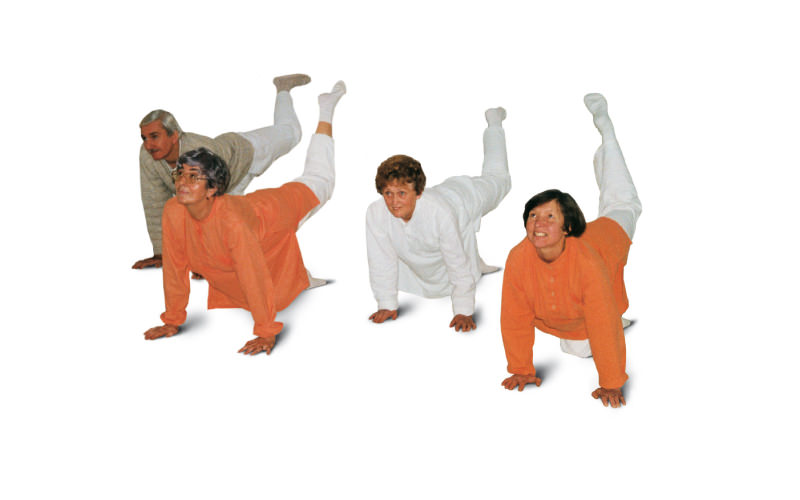
Regular practice of Yoga will keep the human body vital and healthy into old age. Yoga exercises have a medically demonstrable, stimulating and regulating impact upon all systems of the human body, including the glands, organs and nervous system. They have a purifying and regenerative effect on the entire body. During practice of the Yoga Asanas, the rhythmic alternation of stretching and contracting individual parts of the body causes blood and lymph to be squeezed out of the vessels. With each contraction there is a brief reduction in blood supply and then with each stretch the same area becomes flooded with a fresh supply of blood carrying oxygen and nutrients. In this way, organs and muscles receive optimum nourishment, circulation is improved and there is better elimination of toxins and waste products.
In the stretching phase of the Yoga Asanas, gentle pressure is exerted on the base substance between the cells of the body. This substance is responsible for transmission of information between cells. Yoga Asanas improve this function, which enhances lymphatic drainage, decongestion of the body’s tissues and increased elimination of waste via the kidneys. The body’s lymphatic system is responsible for transporting fatty substances from food through the blood vessels, and is also responsible for the elimination of waste products from the body’s tissues. The lymphatic system is of prime importance in immune function, therefore in principle, the immune system is greatly supported by the practice of Yoga Asanas. One other organ of the lymphatic system to greatly benefit from stretching and relaxing is the skin, which is the largest organ of our body. The Yoga practices retain elasticity of the skin and therefore its youthfulness.
The inverted postures in particular, such as Viparitakarani Mudra, Sarvangasana and Shirshasana, produce an improvement in blood supply to the upper part of the body. Venous congestion is relieved in the lower part of the body and blood pressure is regulated. Practice of the Dynamic Asanas slightly raises blood pressure and thus stimulates circulation. However, the relaxation process after practice of the Asanas (especially the deep relaxation of Yoga Nidra), induces a conscious switch of function from the Sympathetic Nervous System to that of the Parasympathetic Nervous System. The change is one from activity with elevated blood pressure and increased pulse rate, to a state of lowered blood pressure and relaxed pulse.
As a consequence the Autonomic Nervous System, which is normally beyond our conscious control, responds indirectly to the Yoga exercises by restoring functional balance of the Sympathetic and Parasympathetic Nervous Systems. The Endocrine System is also regulated in much the same way. This produces a feeling of wellbeing, inner balance, harmony and ultimately, optimum health.
Dr. Med. Ingrid Gebhardt